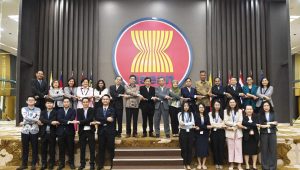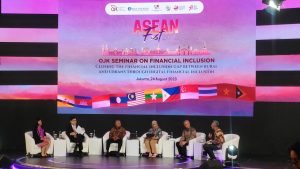Eid-ul-Fitr, the end of Ramadan, the ninth month of the Islamic lunar calendar, is celebrated by Muslims worldwide. This year, Eid al-Fitr is anticipated to fall on Friday, April 21, 2023, or Saturday, April 22, 2023. As a sign of appreciation, prayers are said, ties between relatives are strengthened, and alms are given to the needy. Muslims celebrate each other’s accomplishments and beg for forgiveness, bringing them closer together physically and spiritually. Although the celebration of Eid is largely the same worldwide, local traditions and cultural significance may make Eid so special in different regions, including in Southeast Asia.
In Malaysia, Eid, called Hari Raya Aidilfitri᾽, is celebrated by returning to their hometown and is known as “balik kampung.” Besides, elders also give children presents or money. Similar to Malaysia, Eid, or Lebaran as it is known in Indonesia, also denotes a significant exodus as many Muslims return to their hometowns called “mudik.” They frequently eat special dishes like rendang, a fiery meat dish, and ketupat, a rice dumpling shaped like a diamond.
In Phuket, a province in southern Thailand where migrant Malays first settled, there are about 30% Muslims. The Eid al-Fitr festival is particularly well-known on this vacation island among Muslims. Family and friends celebrate by traditionally dressed in their best attire to attend the festival and participate in Eid prayers at the mosque.
The Cham Muslim community in Cambodia also holds a feast to mark the end of Ramadan. A long time ago, the tradition was brought to Cambodia from the ancient Champa kingdom in Vietnam. Cham families celebrated the end of Ramadan by visiting one another’s homes and sharing meals. People in the village visit anyone they choose, especially the less fortunate ones, to give them some food or money.
After the mosque prayers on the morning of Hari Raya Aidilfitri, family members in Singapore ask their elders for forgiveness. Most families follow the custom of donning matching colors to represent unity. Besides, large decorations like “Selamat Hari Raya” cutouts, vibrant fairy string lights, ribbon ketupats, and crescent moon are common during the fest.
The government of the Philippines made Eid’l Fitr a recognised holiday in 2002 to honor the nation’s Islamic heritage. It is customary for Muslim Filipinos to dress in new clothes, eat something sweet like a date on the way to the mosque, and say a brief prayer. Giving to the needy, sending Eid greetings, and sharing a meal with family are additional important aspects of the Eid celebrations in the Philippines.
In Brunei, large crowds assemble to light fireworks or carry lanterns. The four-day celebration, comparable to New Year’s celebrations in importance, is the most significant traditional festival of the year. The noise is increased by transferring household appliances to drums, the most enjoyable activity while sober. Eid-ul-Fitr is not a public holiday in Vietnam, Myanmar, and Lao PDR, where Muslims make up a minority. However, the Muslim populations there typically get together to celebrate the day with food, new clothes, cultural events, aid charity, and big feasts.


